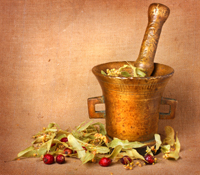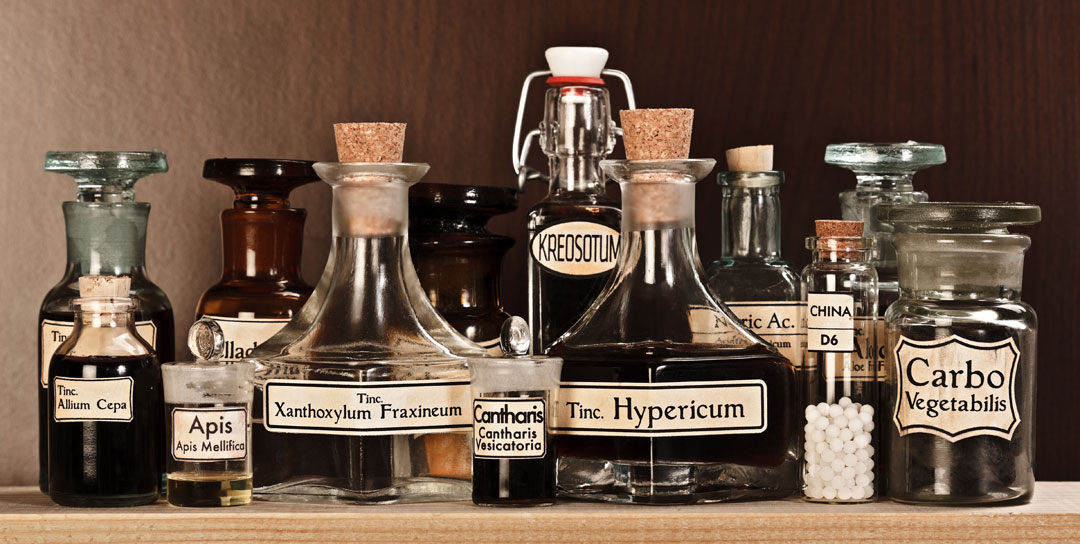 GERM THEORY
GERM THEORY
Prior to the 1860s, disease was thought to be spread through “miasma”, or bad air. Hospital wards were aired out at mid-day to dissipate the toxic atmosphere, and the windows in houses in plague areas were closed at night to prevent the noxious fumes from entering the house.
Oliver Wendell Holmes Sr., Professor of Anatomy and Physiology at Harvard Medical School, first published his work on the role of germs in contagion in 1843. It was tested and expanded upon by Louis Pasteur, who completed his landmark pasteurization tests on April 20, 1862.
 ANTISEPTICS
ANTISEPTICS
Soap and Water
Simple soap and water is a good disinfectant, not because soap kills germs, but because it washes them off the hands.
Iodine
Iodine is usually prepared in an alcoholic solution (called tincture of iodine). During the Civil War it was noted that painting it on a wound prevented extension of the injury. It is no longer used as it promotes scar tissue and retards healing.
Chlorinated Lime Water (Bleach)
Bleach is a good sanitizer and is still used today as an inexpensive if crude purifier for household water containers in earthquake emergency kits.
Carbolic Acid (Phenol)
In a strong solution, phenol is a good disinfectant. After Joseph Lister, a British surgeon, championed its use in the late 1860s, carbolic acid was used by physicians to wash their hands pre-surgery. It was used as a fine spray over the patient’s body as well.
Alcohol
George H. Tichenor, a Confederate officer and physician, experimented with the use of alcohol on his own wounds and was able to avoid amputation as a result. He later developed an alcohol-based patent medicine.
 VACCINATION
VACCINATION
The earliest confirmed experiments with hypodermic needles were conducted by Christopher Wren in the 1600s, but the first successful injection is generally attributed to Dr. Alexander Wood of Edinburgh in 1853. Dr. Wood is also credited with the invention of the all-glass syringe which allowed accurate determination of dosage.
The value of vaccination to prevent disease was known throughout the nineteenth century, but since neither needles nor injection sites were ever sterilized, infections were rampant. As a consequence, vaccination was very controversial.
 SURGERY
SURGERY
Anesthetics
Contrary to common belief, anesthetics were readily available and generally used for Civil War surgery, even in the Confederacy.
The usual method for administering anesthetics was a cloth or paper folded in the shape of a cone, with a sponge in the apex. It was positioned at some distance over the face of the patient to allow the first breaths to mix with air, and then gradually brought down to cover the nose and mouth until unconsciousness was produced. Later in the war various specifically-designed inhalers were used, such as Chisholm’s inhaler.
Chloroform was the favored anesthetic because it was less volatile than ether, but mortality from administration was relatively high, about 0.5%. Ether was slightly less dangerous to the patient (mortality from administration was about 0.3%) but was rarely used because it was explosive, and consequently dangerous in field hospitals.
Pain Killers
Whiskey was frequently administered prior to anesthesia to combat shock, followed by opium pills or dust to relieve pain. Morphine (first sold commercially in 1827) was rubbed into the wound itself.
 CHILDBIRTH
CHILDBIRTH
In 1843, Oliver Wendell Holmes noted that childbed fever appeared to be spread by the physicians attending the pregnant women and proposed that disease was being spread by person-to-person contact. He was attacked for advancing this theory by several of the most prominent physicians of the day, but persevered and republished the article in 1855, with an eloquent plea for adoption of basic sanitation techniques.
Ignaz Semmelweis, a Hungarian obstetrician, reached a similar conclusion in 1847, and instituted a strict policy that physicians in his hospital wash their hands with chlorinated lime water before examining pregnant women. This policy resulted in a reduction of deaths from puerperal fever to 2.2% from 18%.
 DISEASES
DISEASES
Smallpox
Smallpox remained periodically epidemic in the 1800s despite the availability of a vaccine, due in part to resistance to the vaccination process by the population. In 1868 an epidemic struck San Francisco and mass vaccination was enforced by health officials, at times over the vehement protests of the citizens involved.
Cholera
Cholera is a bacterial infection of the small intestine causing vomiting and diarrhea. Death is by dehydration. It is spread by contaminated food or water, and since only 1%-33% of infected people become symptomatic, the spread of the disease can be both rapid and widespread. Untreated, the mortality from cholera is 50-60%.
Tuberculosis
Known as ‘consumption’ in the 1800s, tuberculosis is an infectious bacterial disease transmitted by airborne particles; the ‘miasma’ explanation for disease may have been closer to the truth than modern readers give credit for. In 1815, 25% of deaths in England were due to tuberculosis.
Measles
Measles was a deadly disease during Civil War times, in part due to complications such as bronchitis and pneumonia. However, the primary disease itself was also more virulent during that time period, and in the late 1860s reports of a mortality rate approaching 50% were common.
Ague and Catarrh
These two terms appear frequently in publications and diaries of the 1860s and refer to a general malaise apparently similar to modern day flu. Ague usually involved aches, fever, and chills, while catarrh normally included a cough as well. In some cases, the disease described may have been malaria.
 COMMON TREATMENTS
COMMON TREATMENTS
Medical treatments changed little during the early to mid 1800s, until the causes of disease became better known. Traditional treatments generally focused on removal of blood or fluid from the body, on the theory that they were contaminated or contained elements which had become unbalanced.
Blistering involved applying hot plasters to the skin to raise blisters which were then drained. Leeching or blood-letting removed blood from the body. Purgatives, diuretics and laxatives such as calomel (mercury chloride) removed digestive products. All tended to weaken the patient, and many were ‘doctored to death’.
(Posted April 2013)
